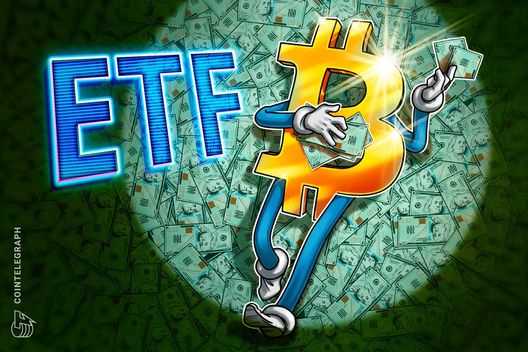As cryptocurrency enthusiasts tune in this Wednesday, Bitcoin finds itself steady around $122,000 after reaching an impressive peak of $126,200 earlier this week. With market analysts eyeing a potential leap to $140,000 in the coming weeks, much attention is focused on Bitcoin’s robust past performance. Economist Timothy Peterson recently highlighted a 50% chance of Bitcoin surpassing the $140k mark by month’s end, based on simulations that analyze historical trends from the last decade.
October has witnessed a notable 10% uptick in Bitcoin’s value, aligning with the seasonal trend where financial assets typically thrive. This surge has been fueled by record inflows into exchange-traded funds (ETFs) and a significant reduction in supply as more coins leave centralized exchanges. Current exchange balances have dipped to a six-year low of 2.83 million BTC, with substantial withdrawals of 170,000 coins in just the past month, indicating a tightening market perhaps favorable for price stability.
“Options markets are pricing in a feral 5% chance for another 10% rally in the SPX into year-end, and it’s increasingly difficult to find a negative catalyst to counteract that view,” said Augustine Fan, head of insights at SignalPlus.
Despite the enthusiasm surrounding Bitcoin, risks lurk in the shadows. The cryptocurrency landscape currently navigates a precarious balance between strong technical support and looming macroeconomic uncertainties. Analysts like Nick Ruck from LVRG Research warn that while institutional demand and accumulation trends have bolstered prices, any unexpected developments from the Federal Reserve could stir volatility.
Additionally, the ongoing U.S. government shutdown has limited the flow of new economic data, leaving investors without critical insights crucial for making informed decisions. As two significant events, the Federal Open Market Committee (FOMC) meeting and Mag-7 earnings, approach later this month, market watchers are left speculating whether Bitcoin’s trajectory will continue upward or face a bearish correction.
In the last 24 hours, Bitcoin’s rally has hit a pause due to profit-taking, causing a minor decline of over 2% that has also affected other cryptocurrencies like XRP, Solana’s SOL, ether (ETH), and Cardano’s ADA, which fell by up to 7%. However, BNB Chain’s BNB has managed to carve out a 1.5% gain, distinguishing itself amid the market pullback as its ecosystem experiences renewed activity.
At this juncture, $125,000 serves as a pivotal point for Bitcoin. While demand from ETFs and withdrawals from major holders provide a buffer for the bulls, the prevailing silence in macroeconomic indicators hints that market movements are far from over.

Bitcoin Market Insights
Key points related to the recent developments in the Bitcoin market are as follows:
- Current Price: Bitcoin is holding around $122,000 after reaching a record high of $126,200.
- Future Predictions: Economist Timothy Peterson suggests a 50% probability of Bitcoin rising to $140,000 later this month.
- Market Trends: Bitcoin has climbed nearly 10% since October began, a period traditionally bullish for financial assets.
- ETF Influence: U.S.-listed spot ETFs have accrued over $60 billion since January 2024, with significant inflows contributing to price rises.
- Supply Dynamics: The number of BTC on exchanges has dropped to a six-year low, with 170,000 coins withdrawn recently, indicating shrinking supply.
- Institutional Demand: Strong institutional buying is noted as a key factor supporting Bitcoin’s price stability.
- Macroeconomic Uncertainty: Investors are cautious due to a lack of economic data amidst a U.S. government shutdown, which could impact future rate cuts by the Fed.
- Price Volatility: Bitcoin’s recent rally has paused due to profit-taking, affecting other cryptocurrencies negatively.
- Catalysts for Price Movement: Upcoming FOMC and Mag-7 earnings data could significantly influence Bitcoin’s next price action.
“Accumulation trends and institutional demand have propelled prices to new highs, but optimism is still exposed to surprises from the Fed.” – Nick Ruck, LVRG Research
Bitcoin’s Bullish Surge: Opportunities and Challenges in the Current Market
The recent price fluctuations of Bitcoin, especially its edge around $122,000 after hitting a peak of $126,200, highlight an exciting yet precarious moment in the cryptocurrency landscape. As Bitcoin experiences a notable uptick, similar cryptocurrencies like XRP, Solana’s SOL, and ether (ETH) have tumbled significantly, illustrating the contrasting performance within the crypto sector. This divergence presents a telling narrative of market dynamics, offering both competitive advantages and potential hurdles for Bitcoin.
Competitive Advantages: One of Bitcoin’s most significant strengths lies in its increasing institutional acceptance, marked by record ETF inflows exceeding $60 billion since January 2024. Analysts are keen on the $140,000 target, presenting a compelling bullish sentiment that many enthusiasts find appealing. Additionally, the diminishing supply of Bitcoin on exchanges—now at a six-year low—paired with rising institutional demand, provides a robust backdrop for future price increases. Such conditions empower Bitcoin to maintain its status as a digital gold and a primary investment for those looking to leverage prolonged bullish trends.
Competitive Disadvantages: However, the optimism around Bitcoin is shadowed by macroeconomic uncertainties, particularly due to the potential impact of a U.S. government shutdown and the Federal Reserve’s upcoming policy decisions. Market analysts suggest that the absence of critical economic data may constrain investor behavior, limiting Bitcoin’s potential for further surges. Moreover, the steep profit-taking witnessed recently, with Bitcoin slipping over 2%, exacerbates concerns about its volatility and investor sentiment.
This situation could primarily benefit long-term investors and institutions that are strategically positioned to absorb short-term fluctuations while capitalizing on the long-term bullish trajectory. On the flip side, retail investors or those with lower risk appetite might face challenges navigating the volatile landscape shaped by both micro and macro factors. The recent price movements could heighten their exposure to losses, particularly with competing cryptocurrencies struggling to gain momentum.
As the market braces for critical earnings and economic evaluations, the duel between bullish projections and potential corrections will significantly influence Bitcoin and its contemporaries, defining opportunities for some while creating pitfalls for others.
















